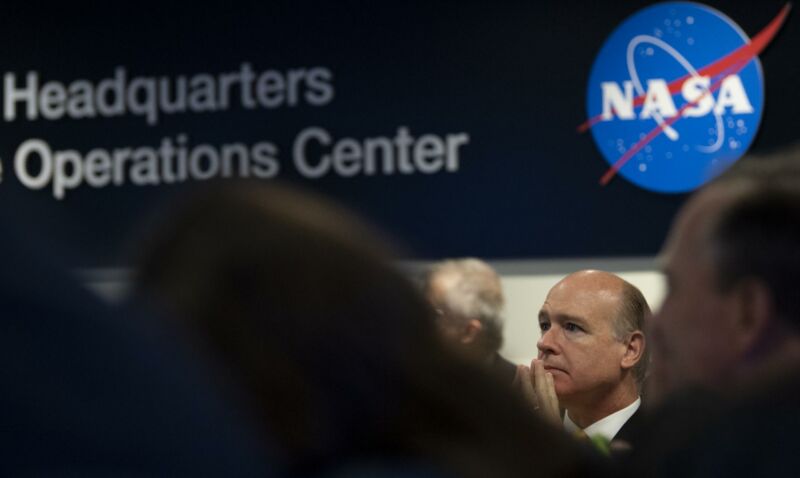
The US House Appropriations Committee passed a budget bill for NASA on Thursday, and it's generally good for the space agency. The legislation provides $25.04 billion, and it funds most of NASA's top spaceflight priorities, including the Artemis Moon program.
Notably, the bill appropriates $1.345 billion for a Human Landing System as part of the Artemis Program. And although some House members grumbled during hearings this week about NASA's decision in April to select SpaceX as the sole provider of the first demonstration landing, the legislation does not block NASA from moving forward with the contract.
As part of its plan to return humans to the Moon, NASA has sought to balance its reliance on traditional space contractors such as Boeing and Lockheed Martin—generally favored by members of Congress due to their largesse in political donations and willingness to spread jobs across numerous districts—and new space companies such as SpaceX that deliver more bang for the buck while not playing as well with elected officials.
One major implication of NASA's $2.89 billion award to SpaceX in April for the Human Landing System is that the contract provided significant funding for the Starship rocket and its Super Heavy booster. This advanced launch system will directly compete with NASA's Space Launch System rocket, which is built by traditional space contractors and provides thousands of jobs in all 50 states. If Starship works, which seems increasingly likely, it will launch more payload than the SLS booster, for substantially less money, all while being reusable. In short, it should be superior to NASA's SLS rocket in every conceivable way, except politically.
So the fact that the US House agreed to provide NASA with funding that supports Starship—SpaceX's lunar lander is based on a modified Starship vehicle—is significant. But that doesn't mean some members of Congress didn't try to buttress the SLS program, which is based at NASA's Marshall Space Flight Center in Alabama.
Finding missions for SLS
One of the SLS rocket's most ardent supporters, US Rep. Robert Aderholt, R-Alabama, proposed an amendment to the appropriations legislation that modified NASA's Human Landing System program and supported upgrades of the SLS rocket. Ultimately, the amendment was withdrawn, but it illustrates the lengths to which committed politicians such as Aderholt are willing to go to save the SLS rocket from obsolescence.
Aderholt's amendment said NASA should select a "second" Human Landing System provider during the coming fiscal year, which would necessarily either be a team led by Blue Origin or Dynetics. This is not controversial, as NASA itself would like to add a second provider and plans to do so with a follow-on contract for future missions. However, the Aderholt amendment then made several specific demands:
- Mandates that this non-SpaceX lander fly on Block 1B of the SLS rocket, an upgraded version with more carrying capacity.
- Directs that the SLS Block 1B launch not be part of the “price” of this second HLS provider’s demonstration mission, so NASA must provide the rocket for "free."
- Directs NASA to invest in the capacity to build more SLS rockets to support a higher launch rate (without providing funding).
- At some time in the future, but no later than 2032, NASA must have a plan to fly at least one SLS Block 1B cargo flight a year. "The mission for which is to be determined by the NASA Administrator."
The amendment offers a two-pronged strategy. The first is to justify the expenditure of billions of dollars to upgrade the rocket from its initial configuration, Block 1, to a larger, more capable rocket. This "Block 1B" version includes a new second stage, the Exploration Upper Stage, that would be developed by Boeing over the next five years or so. This is clearly alluring to Boeing, which is behind the Aderholt amendment, as well as Alabama legislators who would love nothing more than to host a second decade of SLS rocket development.
Secondly, this amendment would seek to find missions for this upgraded rocket, which would have a launch cost of about $2 billion per flight. (The per-unit cost for the Exploration Upper Stage alone is likely to be more than $800 million.) To this end, Aderholt sought to require the second lunar lander to fly on a Block 1B SLS rocket launch.
This is pretty wild for a couple of reasons. For one, all of the HLS bidders were told they could choose whatever rockets they preferred to launch on back in 2019. At the time, NASA and Boeing actually pitched a "commercial" version of the SLS for lunar landers. None of the main three bidders (SpaceX, Blue Origin, or Dynetics) chose the SLS rocket, of course. It was too expensive, and there was no guarantee NASA or Boeing could build them at a high enough rate.
In addition to mandating lunar lander flights, Aderholt's provision says that NASA must have a plan for an SLS cargo launch once a year by 2032. Imagine how this provision, had it been adopted, would have hamstrung NASA. Congress is basically telling the agency, "More than a decade from now, you have to use this super-expensive rocket every year, whether you need it or not. And to make sure you do so, we're writing it into law."
How can NASA possibly know that it will need to launch a mission per year on a cargo version of the SLS rocket in 11 years? It cannot, of course.
reader comments
409